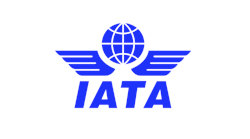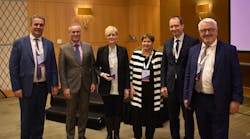MAXWELL AIR FORCE BASE, Ala.
The organization’s new governance structure, which is now fully implemented, has changed the role of CAP’s leadership and even the relationship between its 61,000 volunteers and CAP National Headquarters’ 100 employees. The changes reinforce the Board of Governors’ authority to make strategic policy, shift nonstrategic issues to the national commander, focus the wing commanders’ role on operations and establish a “one CAP” approach to decision-making in which volunteers and NHQ work together to achieve common goals.
“The merging of the two staffs – paid and unpaid professionals – provides for a seamless organizational structure,” said CAP National Commander Maj. Gen. Chuck Carr. “We are all on one team now.”
CAP Board of Governor Chairman Brig. Gen. Rich Anderson described the changes as a “paradigm shift” for policy-level decisions that will prove correct: “With the wing commanders focused on day-to-day missions, making decisions that are important to the membership, that’s where there will be considerable benefit to be realized.”
CAP’s new governance structure was unveiled Aug. 24 at the 2012 Annual Conference in Baltimore. Initial implementation took place on Oct. 1 when the BoG approved an updated CAP Constitution and Bylaws that incorporated the provisions of the new governance structure.
In keeping with the new Constitution and Bylaws, Carr, whose appointment as national commander was confirmed by the BoG, submitted the name of Brig. Gen. Joe Vazquez for confirmation as vice commander and he was confirmed. Vazquez has no specified term and may serve sequential commanders if nominated and confirmed by the BoG.
On Nov. 3, the newly created CAP Senior Advisory Group selected Col. Tim Verrett of the Pacific Region and Lt. Col. Jayson Altieri of the North Carolina Wing as CAP at-large BoG members. The selections, which increased the number of at-large members from two to four, were the first made under the new governance structure.
Another key initiative associated with the new governance structure – updating 48 regulations to reflect the changes – was completed by CAP’s staff on Dec. 31.
With the governance structure in place, the members and staff will now focus on implementation of the organization’s two-year strategic plan – the first ever developed jointly by CAP and the BoG. Achievement of the plan’s six priorities – which emphasize funding; resource, skill and youth development; public awareness; aerospace education; and institutional excellence – will be used as the basis for the national commander’s and chief operating officer’s annual performance evaluations.
“It’s a 360-degree evaluation with input from the CAP-U.S. Air Force commander,” said Carr, “so it is incumbent on all of us to do our very best for the organization in implementing the plan.”
California Wing Commander Col. Jon Stokes summed up the organization’s sentiments about CAP’s changes in governance: “Though there were a lot of concerns about the changes and who would be affected in the organization, the concerns were for naught. Five years from now, we will reflect on these changes and know they were for the good and for our continued growth as an organization.”
For more information on CAP’s new governance structure, follow this link to the Civil Air Patrol Volunteer’s cover story in the January 2013 issue: http://www.capvolunteernow.com/cap_volunteer/
Civil Air Patrol, the official auxiliary of the U.S. Air Force, is a nonprofit organization with more than 61,000 members nationwide, operating a fleet of 550 aircraft. CAP, in its Air Force auxiliary role, performs 90 percent of continental U.S. inland search and rescue missions as tasked by the Air Force Rescue Coordination Center and is credited by the AFRCC with saving an average of 80 lives annually. Its volunteers also perform homeland security, disaster relief and drug interdiction missions at the request of federal, state and local agencies. The members play a leading role in aerospace education and serve as mentors to 27,000 young people currently participating in the CAP cadet programs. CAP received the World Peace Prize in 2011 and has been performing missions for America for 71 years. CAP also participates in Wreaths Across America, an initiative to remember, honor and teach about the sacrifices of U.S. military veterans. Visit www.gocivilairpatrol.com or www.capvolunteernow.com for more information.




